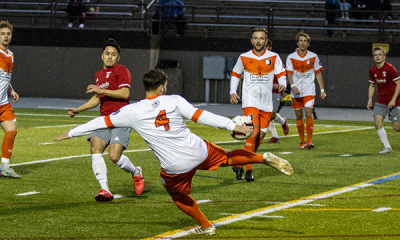
Jose Ramirez has had an outstanding 2017 season and has six more potential games to play in before the regular season is finished.
Ramirez showed what he can do in the 2016 season and now this year has topped that with an even better performance.
Ramirez has played in 146 games, has a batting average of .317/a on-base percentage of .370/ and has a slugging percentage of .583.
Jose has 179 hits, 51 doubles, 6 triples, 29 home runs, has driven in 81 RBIs, and has 86 extra-base hits.
TJ Zuppe tweeted out the following:
https://twitter.com/TJZuppe/status/912073626639323136
Ramirez is behind the likes of current teammate Francisco Lindor, Grady Sizemore, Roberto Alomar, Albert Belle, Jim Thome, and Manny Ramirez.
Now you may be asking what is the significance of WAR for an MLB player? Well, don’t worry I can explain to you what WAR is, and what it is good for.
The following is the definition of WAR from FanGraphs.com
WAR– Wins Above Replacement (WAR) is an attempt by the sabermetric baseball community to summarize a player’s total contributions to their team in one statistic. You should always use more than one metric at a time when evaluating players, but WAR is all-inclusive and provides a useful reference point for comparing players.
WAR is used for situations when a starting player sustains an injury and the team had to replace him with a minor league player or a player from their bench how much would the team be losing out on without said player.
The value of WAR is valued in a wins format, so we could say that Player X is worth +6.3 wins to their team while Player Y is only worth +3.5 wins, which means it is highly likely that Player X has been more valuable than Player Y.
To Calculate WAR for a position player you would have to do the following:
For position players, you want to take their Batting Runs, Base Running Runs, and Fielding Runs above average and then add in a positional adjustment, a small adjustment for their league, and then add in replacement runs so that we are comparing their performance to replacement level rather than the average player. After that, you simply take that sum and divide it by the runs per win value of that season to find WAR.
The equation would look like this :
WAR = (Batting Runs + Base Running Runs +Fielding Runs + Positional Adjustment + League Adjustment +Replacement Runs) / (Runs Per Win)
WAR is used to find out what the value of each player on a team is. Instead of comparing two players on an offensive standpoint, and leaving out defensive runs saved. WAR puts all of those factors together and gets a players all around value.
WAR estimates a player’s total value and allows us to make comparisons among players with vastly different skill sets.
FanGraphs gives you a general idea of what a player does for a team with their WAR number:
- If the player has a 0-1 WAR, they classify that player as a Scrub
- Player has a 1-2 WAR, that player is a Role Player
- 2-3 WAR, Solid Starting Player
- 3-4 WAR, is a Good Player
- 4-5 WAR, is an All-Star
- 5-6 WAR, the team has a Superstar on their hands
- If the player has a 6+ WAR, he would be classified as an MVP
With Jose Ramirez having a 6.1 WAR currently, you could identify him as an MVP.
With the numbers that Ramirez has put up this year, the chart is pretty accurate because Jose is in the hunt to become the American League MVP.


















Homer Graham
September 26, 2017 at 2:02 am
JRam, my man, MVP ’17 OR Frankie LIndor MVP ’17 !!!!!
GO TRIBE !!!!!!!!!!!! WAHOOOOOOOOOOOOOOOO!!!!!!!!!!!!!!!!!!!